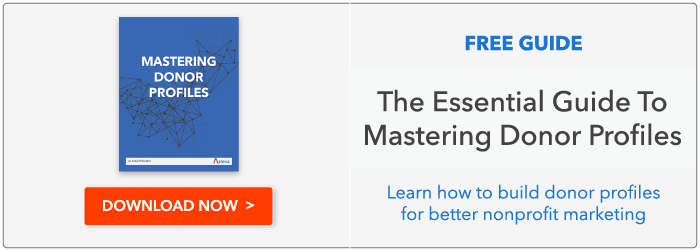How to Build Better Relationships with High-Value Donors

Nonprofits appreciate donations of any size. But it’s fundraising from major donors that makes it possible for effective change. And finding and maintaining their contributions requires a different approach.
It’s all about relationships. Once you meet high-net-worth individuals who are interested in your organization, you’ll have to build a relationship with them. They need to validate their decision and they want assurance that a major donation will make a difference.
Are You Ready for Them?
Major donors become a valuable, ongoing source of income for your organization. The time and resources you spend on cultivating a big constituent should be considered a return on your investment. And it will take time.
That’s why it’s important to make sure your organization is prepared for the additional effort involved. You’re not just preparing a direct mail or online fundraising project that represents a single contact.
You’ll be engaging a major donor again and again. Not everybody has the personality or the patience to undertake this. You must identify and support individuals within your organization who value and are comfortable with nurturing these important relationships.
Big contributors have different sets of expectations. They want to feel an aspect of ownership. They’ll want help understanding and aligning with your mission. That includes what might be called an “inside track” on both your challenges and future plans.
Not everybody in your organization will be capable of this type of communication and relationship building. Members at the leadership level are often called upon to meet with potential major donors. And they’ll need to set aside the time to interact.
Understanding What Motivates a Major Donor
High net worth individuals often make decisions to give based on four main reasons:
- They are personally associated with your cause – Affinity
- It’s a beneficial business decision or it enhances their social standing – Mutual Benefit
- They believe in giving, and their financial ability allows them to do so – Philanthropy
- They give because they enjoy the acknowledgment they receive as a result – Social Recognition
As your organization deepens relationships with potential supporters, you’ll start to see which of these motivations are at work. Then you’ll need to find ways you can align with the rationale. It’s a lot like meeting a new friend and over time finding out what you have in common.
The Influence Factor
Your actions and attitude will determine the success of obtaining a large donation. Your approach will have an influence. Here are the qualities the people from your organization who interact with major donors should have:
- You must establish a rapport if you expect to persuade. Are you able to see things from a donor’s point of view?
- You must create emotional engagement. Are you passionate about what your organization does?
- You must practice patient persistence. Are you flexible enough to deal with indecision?
Key Considerations
It’s rare that a high-net-worth individual will step forward and simply offer to make a major donation. You’ve got to find them. Research is your best tool. Fundraising software makes that a valuable and practical tool. It gives you access to filtered public information to help you identify the right prospects.
Don’t rule out what’s known as “soft information.” Ask your trustees, existing donors, and even friends or family to scan their networks. An introduction this way often achieves better results.
It might take years to obtain a major donation from a high-net-worth individual. That means you’ll want to engage as many as your organization can accommodate. This leads back to using research for a robust source of potential constituents.
You’ve probably heard growing discussions about transparency. That’s going to be a crucial area of development for your organization as you develop relationships with major donors. Many of them will want to be included in some of your organization’s activities. How can you accomplish this without distraction?
There is an art to asking, and it involves even more skill when asking for a major donation. Best-selling business author Bo Bennet wrote, “An objection is not a rejection; it is simply a request for more information.” Be prepared to hear “no.” Then find out how you can answer any questions causing their hesitance.
There should be absolutely no delay in thanking your donor when you do hear “yes.” The acknowledgment and expression of gratitude is a crucial part of the closure. It brings a major constituent back to the reason why they chose to give. (In the for-profit world, it’s called “closing the sale.”)
It’s Only Just Begun
The relationship you’ve nurtured with a potential major donor may span months or even years before it’s fruitful. A large gift is not the end of that relationship.
These supporters are your best prospects for future contributions. Don’t wait until the thank you stage to start thinking about how you’ll nurture the next step of the relationship. You already know a lot about them. Put that knowledge to work.


